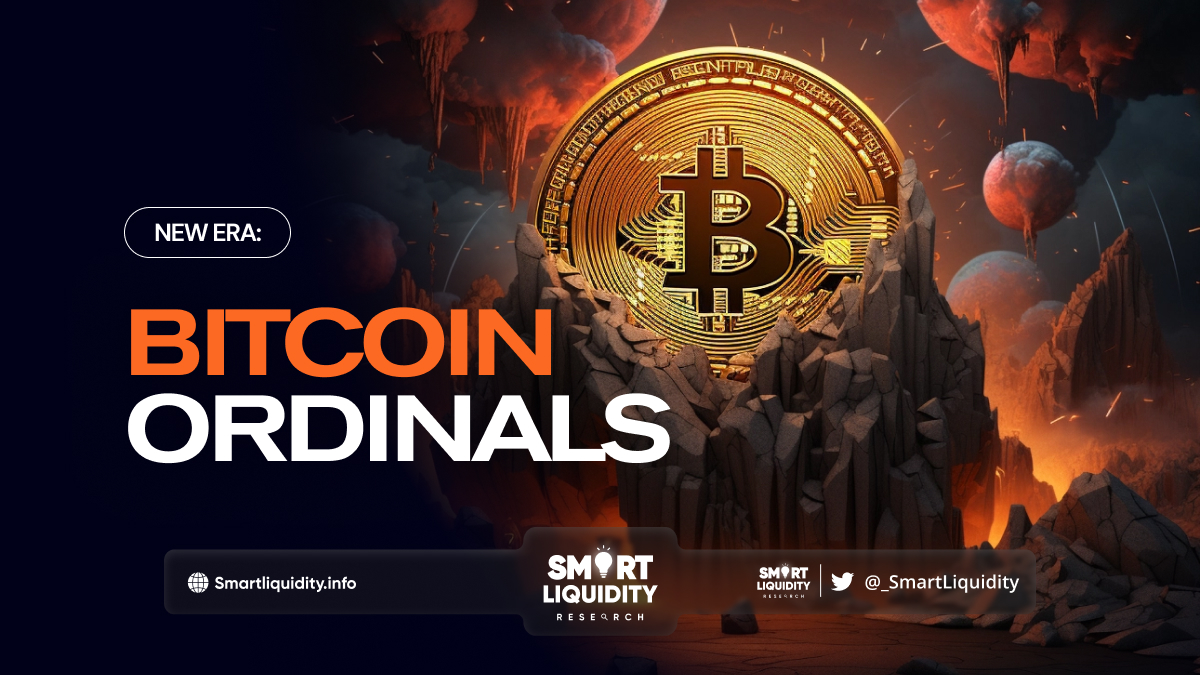Ordinals and Inscriptions Unlocking a New Era for Bitcoin


Bitcoin has long been associated with its role as a digital store of value. However, a recent innovation called Ordinals and Inscriptions is shaking things up, unlocking a plethora of novel use cases and potentially ushering in a new era for the network. This article delves into the technical intricacies, explores the diverse applications, and ponders the future implications of this groundbreaking development.
Ordinal Theory: Unveiling the Uniqueness of Satoshis
Ordinal Theory introduces a novel concept where each satoshi, the smallest unit of Bitcoin, is given a unique identity. This identity allows for the tracking and transfer of individual satoshis, imbuing them with numismatic value. Unlike traditional tokens or sidechains, Ordinal Theory operates directly on the Bitcoin network without necessitating any protocol changes. It leverages the existing infrastructure to create digital artifacts that are as secure and immutable as Bitcoin itself
The theory extends beyond mere collectibles, hinting at a future where Bitcoin could facilitate a decentralized replacement for systems like DNS or serve as a foundation for public key infrastructure with key rotation capabilities. However, these applications remain largely speculative and are primarily discussed within the community of fringe ordinal theorists.
Inscriptions on the Blockchain: More Than Just NFTs
Inscriptions are essentially metadata attached to individual satoshis, transforming them into unique digital artifacts that can carry information such as images, text, or code. This process creates Ordinals, which are the outcome of these inscriptions. The size of these inscriptions is limited by the block space available, with a current maximum of around 4 MB.
The versatility of inscriptions is evident in their various uses, from providing transaction context to creating Bitcoin-native NFTs. They leverage the Bitcoin blockchain’s inherent properties, such as its security and decentralization, to offer a new medium for digital expression and asset creation. They can house diverse content, including:
📝 Text documents: Manifestos, poetry, or legal contracts can be permanently archived, ensuring authenticity and immutability.
🎨 Digital collectibles: Artwork, music, or even domain names can be inscribed, fostering a new era of decentralized ownership and trading.
🎮 Interactive games: Imagine games hosted directly on the Bitcoin blockchain, powered by inscriptions for data storage and interaction.
This versatility opens doors for unprecedented applications within the Bitcoin ecosystem.
Technical Aspects and Challenges: Beyond Hype, into Reality
While the potential of Ordinals and inscriptions is undeniable, technical challenges remain. The Bitcoin blockchain was not designed for storing large amounts of data. Inscribing complex information can lead to high transaction fees and block size limitations. Additionally, the lack of standardized formats and tools for inscription creation and interaction presents challenges for widespread adoption.
These challenges are being addressed by the developer community. New tools are emerging to streamline the inscription process and improve data compression. Additionally, on-chain scaling solutions and sidechains are being explored to address the limitations of the main Bitcoin blockchain.
Practical Applications of Ordinals and Inscriptions
The potential applications of Ordinals and inscriptions extend far beyond collectibles and digital art. Here are some intriguing possibilities:
🤳🏻 Decentralized social media: Imagine a social media platform built on Bitcoin, where user data and profiles are inscribed, ensuring censorship resistance and individual ownership.
🎫 Ticketing and event management: Creating unique and tamper-proof tickets for events, concerts, or conferences, potentially eliminating scalping and fraud.
👾 Decentralized gaming: Building interactive games and applications directly on the Bitcoin blockchain, leveraging its security and immutability for a trustless gaming experience.
🔗 Supply chain management: Tracking physical goods through inscriptions on their digital representations could revolutionize supply chain transparency and efficiency.
These are just a few examples, and the possibilities are limited only by imagination and innovation.
Future Implications and Adoption: Will Ordinals Reshape Bitcoin?
While the future remains uncertain, the arrival of Ordinals and inscriptions marks a significant inflection point for Bitcoin. Potential outcomes include:
🚀 Increased mainstream adoption: The diverse functionalities offered by inscriptions might attract new users and developers, broadening the reach of Bitcoin beyond early adopters.
⚖️ Evolving regulations: As inscribed assets gain value and real-world implications, regulatory frameworks will need to adapt to address issues like ownership, intellectual property, and potential financial regulations.
🗣️ Community debate: Integrating new features into an established network like Bitcoin often leads to discussions and potential disagreements. Navigating these discussions with respect and open dialogue will be crucial for the healthy evolution of the ecosystem.
Only time will tell how Ordinals and inscriptions will shape the future of Bitcoin. However, one thing is certain: this innovation has the potential to unlock a new era of possibilities, pushing the boundaries of what’s possible within the realm of decentralized finance and digital value.
The Final Thoughts
Ordinals and inscriptions represent a significant paradigm shift for Bitcoin. They unlock a new layer of functionality, transforming it from a purely financial instrument into a platform capable of storing, managing, and interacting with diverse digital assets. Whether this will usher in a new era of innovation and wider adoption or present unforeseen challenges remains to be seen.
However, one crucial point remains: Bitcoin’s core values of decentralization, security, and immutability are not compromised. Ordinals and inscriptions are built upon these foundations, offering new possibilities while preserving the essence of what makes Bitcoin unique. As we navigate this uncharted territory, it is crucial to approach it with an open mind, a critical eye, and a commitment to responsible development. Only then can we unlock the true potential of this groundbreaking technology and ensure a future where Bitcoin remains a beacon of innovation and financial freedom.




